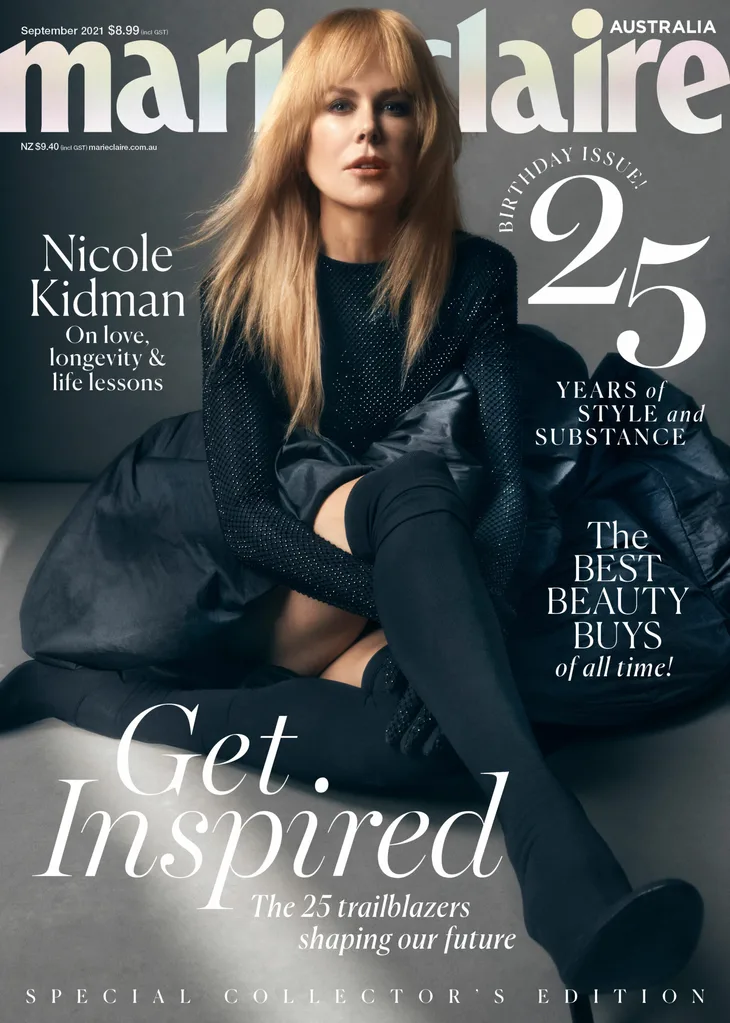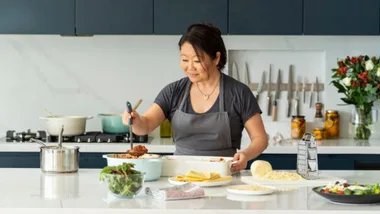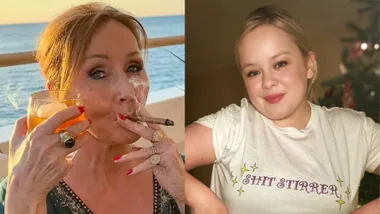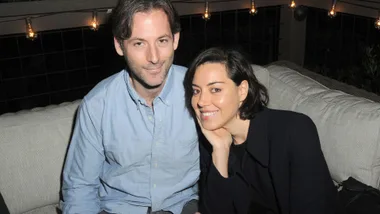Nostalgia for the ’90s has hit new heights thanks to its pop-culture power and fearless fashion. But could you really live there again? Alexandra Carlton ditches the digital world and steps back in time to find out.
The year was 1997. I was in my first year of university. High heels, Botox and shellac nails weren’t part of my universe in any way, not just because I was a penniless student whose skin hadn’t been ravaged yet by stress, laptops and too many hangovers, but because no-one did any of those things back then. I wore parachute-material pants and shell tops (maybe a fetching cowl neck if I was going out at night), straightened my dyed black hair with an iron (as in, an actual iron) and wore two-toned Royal Elastics sneakers around the clock. Makeup was mascara and nothing else. Earlier in the decade I was all about slip dresses and Doc Martens – as Courtney Love as someone could be outside of a Hole video. They key was never trying too hard; comfort was king. It was almost lockdown leisurewear, decades before any of us knew what a lockdown even was.
Looking back on the ’90s, there’s no question that it was a simpler time. You didn’t have anyone to compare yourself to on Instagram. You could buy a house and feel like you had at least a fighting chance of paying it off before you died. Delayed gratification meant life was dotted with measured surprises rather than on-tap dopamine rushes; watching your favourite show (hello, Melrose Place) was an event that you knew you had to do at 8.30pm on Tuesday or you’d miss it entirely, and you never knew how those photos of your friend’s 18th would turn out until you got them back from the chemist a week later. Instead of spending every spare second face-first in a phone – reading angry, polarised people yelling blindly for their team’s side on the news topic of the day – I used to take a coffee out to the rooftop outside my above-shop flat and listen to cheerful house music. I remember it being annoying that no-one could get hold of me unless I was at home next to my landline. But also … how good it was that no-one could get hold of me unless I was at home next to my landline.
It was with this giddy sense of nostalgia that I began my weeklong challenge of living like it was the ’90s, to see if I could recapture a little of that carefree magic. I couldn’t get the dewy skin back. I don’t have a landline. But the idea that I would be filling my days with something other than nervy scrolling was appealing and intriguing.

The first thing I did was ban myself from looking at social media, Google (for non-work purposes) and apps. It was impossible to detach myself from my phone entirely; in 2021, you can’t run a business, a family, pay for things or check yourself into venues using the CovidSafe app without one, so I had to be realistic. But I could force myself away from the pretty pictures of Instagram, and – this one felt the most jarring – the convenience of having the answers to pretty much everything at my fingertips.
The loss of the latter was thrown into sharp focus on the first night of my experiment when my husband called to say he’d be late home from work and suggested I order us something for dinner. Obviously the delivery apps were all out of bounds. If it were really the ’90s, I’d have a library of flyers for local Chinese, Thai and pizza places. That wasn’t an option either – RIP the messy menu drawer – but then a memory came back to me.
The 1990s Pizza Hut jingle. “9-4-8-1 double-1- double-1. Pizza Hut Delivery!” The fact that I could remember that sequence of digits but can’t tell you my own husband’s phone number (thank you, iPhone contacts list) speaks powerfully to the long-term impact of advertising earworms.
There’s no way that relic of a phone number could still be operational, I thought, but what option did I have? I dialled. It worked! Flustered, I ordered a supreme and a Hawaiian – I don’t think we had bougie ingredients like jalapeños or vegan cheese back then – and although it cost a fair bit more than the ’90s price of $16.95 for two (as a teenage Pizza Hut delivery driver, these things stick with me), it went off without a hitch. Apparently I’m not the only one who does this. “Thirty years after introducing the phone number, people still remember it, still dial it and still smile at the memories that come flooding back,” Pizza Hut Australia CEO Phil Read tells me later, adding that the company retained the number for this precise reason. If only Dougie, the universally loved delivery guy who starred in a string of Pizza Hut ads in the ’90s, had brought it to my door.
The next day I awoke bloated and bulging. Carbs aren’t really something I do much of these days except as a treat, but back then the food pyramid had that big, chunky bottom layer of “grains, bread, pasta and rice” at its core, and you were told you should eat more of them than anything else. “It’s not the pasta that’s fattening, it’s what you put on it!” was the accepted – and ludicrous – catchcry.
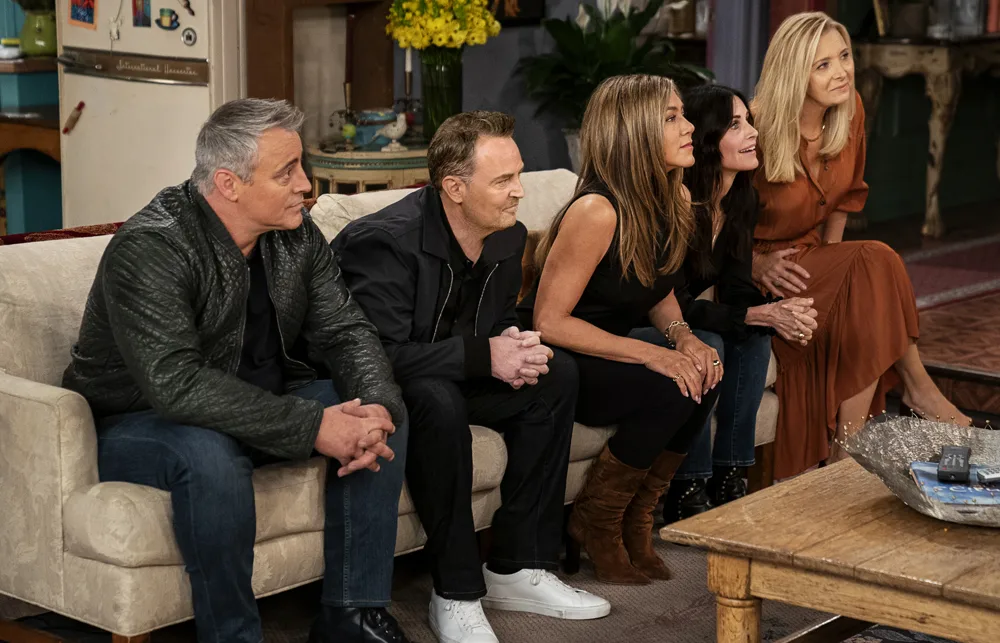
It was a weekend and I didn’t have much on, so naturally my fingers were itching to pick up my phone and plunge beyond my boring terrestrial world. Normally I’d listen to a podcast. Or scroll Twitter and see what everyone was snarking about today. Or do a bit of lazy one-click homewares shopping straight from my phone. But of course none of those things were an option.
I figured I’d watch a movie instead. Netflix was out, obviously. Your TV choices in the ’90s were whatever was playing that minute on the handful of free-to-air channels or the contents of your small, overwatched home-video library. I was not about to buy a video player (is that even a thing you can do today?) so I manufactured a sense of scarcity by searching “1990s” in my Netflix menu, and then closing my eyes and picking out a random movie from the list. I landed on The Bodyguard, something I never would have considered watching again in 2021, preferring to leap indiscriminately onto whatever hit streaming series everyone was talking about at any given moment. Watching Whitney Houston lying around in her mansion listening to her Walkman and her shifty publicist wandering around sucking on Chupa Chups was comfortably nostalgic, but the damsel in distress storyline felt majorly jarring through a 2021 lens. Whitney was badass. Did she really need a guy to leap heroically to her rescue? And did she need to fall in love with him when he did? Then there was the awful scene where Frank, played by Kevin Costner, asks Henry, Houston’s African-American driver, if he knows who’s most likely to get killed in a shootout. Henry doesn’t know. “The cocky black chauffeur,” quips Costner, a line that is deeply, condescendingly racist to the modern ear. I realise that while the ’90s may have been a simpler time on the surface, the undercurrent was actually an ugly mess – so many of us endured and tolerated unacceptable treatment.
Reliving ’90s fashion should be less confronting, I thought. The 1990s saw me through my early teens to my early twenties, so it was unquestionably my formative style decade. In my recollection, the ’90s can be divided into three fashion eras. Grunge, which starred flannel shirts, Doc Martens, ripped jeans and Nirvana’s Kurt Cobain, took off around 1991. By 1995, we’d started listening to house music and going to clubs and fashion was less mangy, more minimal – think waifish Kate Moss in a slip dress. Towards the end of the decade we arrived at the fashion era I think of as ’90s Nice. Almost entirely inspired – at least to my recollection – by Jennifer Aniston in Friends, the idea was simply to look put-together and pretty, with dead-straight hair, understated makeup and “jeans and a nice top”. Oh, and there was also a brief but lively season that I remember as The Citrus Summer, where everything we wore was either fluoro orange, yellow or lime green, jazzed up with jarring lemon and lime prints. The less said about that the better.
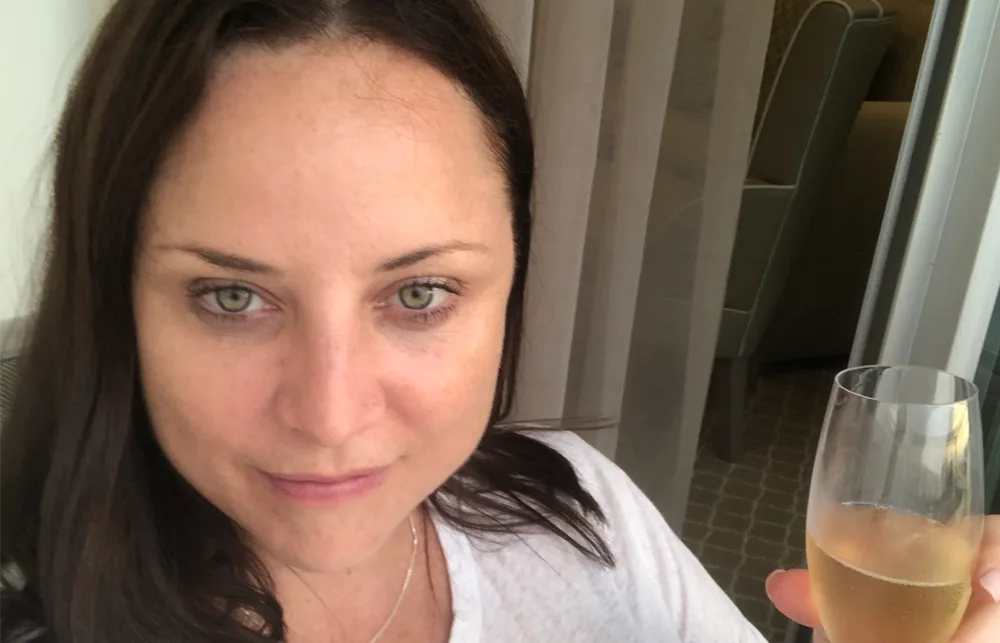
Adopting ’90s fashion today ought to be fairly easy considering most of it is currently on trend again. Nothing makes you feel older than realising that the clacky mules, bucket hats and bike shorts of your teens are now considered fresh and new but I plunged valiantly onwards. For a lunch date with friends I settled on a brown-and-white plaid shirt from Cotton On – worn open with a white spaghetti- strap singlet underneath and bought instore rather than online – and a pair of pale jeans. (The latter was not on brief as the cut was too skinny and high-waisted – ’90s jeans were worn baggy and low for maximum hipbone exposure until the end of the decade when they were firmly replaced altogether with cargo pants.) But they certainly had their place and I felt they were a fairly unobtrusive way for me to dip my toe back into ’90s fashion today in a way that wouldn’t make young cool people stare and giggle at crazy grandma. And let’s face it, there was no way in hell I was getting into a pair of bike shorts in public.
I didn’t think anyone would notice anything out of the ordinary, but I was wrong. “You look very … ’90s,” one of my friends, a former fashion editor, remarked with what I felt was the tiniest twinge of pity. Busted. Suddenly I felt very much like mutton dressed as Courtney Love, and set down my (on theme) grilled vegetable foccacia to wonder out loud what the fashion rules are when it comes to trying on a trend the second time around. “I think people gravitate toward the eras when they were too young to participate in fashion,” says my friend. “So when they grow up, they’re attracted to that.” It’s a good point, and I do feel somewhat relieved to shed my grunge get-up when I’m back in the safety of my house.
Sartorial slip-ups aside, however, I realise there have been some definite upticks to rewinding the decades. Replacing my phone addiction with reflection and imagination is the most obvious one. Every psychologist on earth will tell you that one of the best things you can do to improve your mental health is get off social media – and they’re right. It wasn’t so much that I felt less depressed by the world’s issues – I still settled down to watch the evening news so I knew what was going on. It’s more that getting away from your screen frees you up to do more, and see more. Walking the dog without a podcast playing meant that I noticed the sunlight sparkling in the dewy grass. Observing the buds of the fruit trees instead of scroll-walking made me feel excited that spring was coming. And one morning I even took a coffee onto my front porch – who sits on their front porch? You might be forced to talk to strangers! – and listened to The Pixies. And I did say hi to strangers.
By the end of my challenge the pandemic has gripped Sydney again, a phenomenon that no-one outside of The X-Files could have conceived of in the 1990s. I curl up at home, eat pasta and watch Clueless and Pretty Woman, and realise that much of the low-fi life we lived in during the ’90s is still possible, if you put your mind to it. But under no circumstances will I ever again leave the house looking like a neon fruit orchard. Big mistake. Huge.
This story originally appeared in the September issue of marie claire Australia, out now.
